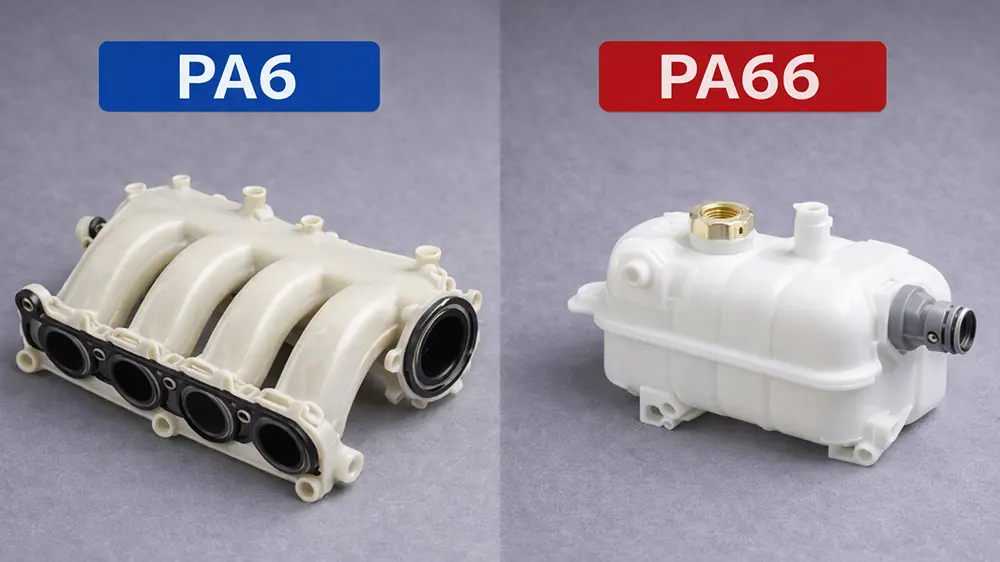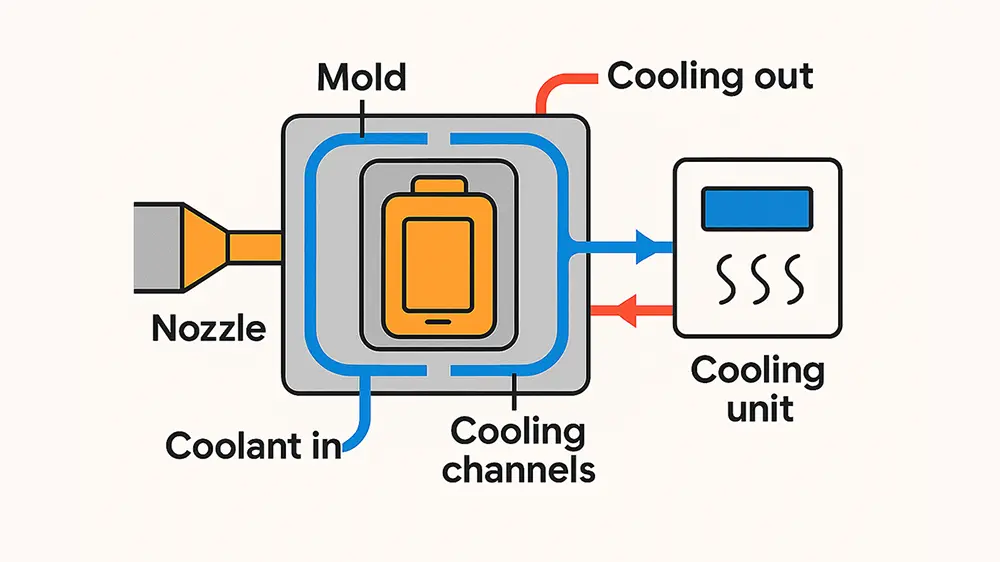The crystallinity and morphology of crystalline plastics affect the physical and mechanical properties of the products. The slow cooling speed is beneficial to improve crystallinity. It is very important to get good mechanical properties and surface products for mold temperature control, so it is necessary to raise the mold temperature for the mold engineer in order to cool down sufficiently to crystallize, but this will inevitably prolong the molding cycle.
The hematocrit (c㎡/g ) of crystallization plastic near the melting point changes a lot. All materials have a certain degree of shrinkage when cooling, generally speaking, crystallized plastic than non-crystallized plastic molding shrinkage rate. Therefore, its products are easy to produce deformation, thick wall products are easy to produce indentation, large parts are likely to warpage. In summary, not only mold temperature should be taken into account, but also parts of the product must be uniformly cooled and solidified (or crystallized).
- Polyethylene
Polyethylene generally has good fluidity at molding and almost no need to worry about its thermal stability. However, it has a strong molecular orientation and is easy to produce deformation products. High-density polyethylene (HDPE) has a sensitive crystallization temperature and requires high injection pressure and speed, especially for thick wall products.
- polypropylene (PP)
Polypropylene and polyethylene have many similarities, liquidity is proportional to the cylinder temperature, but at about 280 ℃, the resin is aging, so the best temperature control is under 270 ℃. Its molecular orientation is strong, forming at a lower temperature will produce warping, distortion, and other deformation, so we must pay attention to the control of temperature.
- polyamide (PA)
Polyamide viscosity is extremely sensitive to temperature changes. Unlike other thermoplastic plastics, nylon has an obvious melting point. The polyamide is formed at its melting point, so the molding temperature must be higher than that of ordinary materials. Nylon hygroscopicity should be fully dry in advance. But it is worth noting that the above 90 ℃ dryings produce discoloration.
- polyformaldehyde (POM)
Polyformaldehyde can be divided into homopolymer and copolymer, both of which are resin with poor fluidity. This kind of resin is prone to thermal decomposition for that you must pay attention to the control of the molding temperature. Copolymerized formaldehyde is better than homopolymer formaldehyde in thermal stability, it can be processed in slightly higher temperature conditions, but this material in the material cylinder stay time should not be too long, or thermal decomposition will occur so that the product color yellow.
- PBT resin
Both PBT (polybutylene terephthalate) and PET (polyethylene terephthalate) belong to saturated polyester (thermoplastic polyester). PBT resin is characterized by its extremely low melt viscosity and good formability. So it crystallizes quickly and sets quickly.
PBT and PET resins are generally reinforced with glass fiber to improve their properties. Non-reinforced resin base material forming with a heating cylinder commonly 230 ~ 270 ℃, the flame retardant grade 250 ℃, mold temperature of 40 ~ 90 ℃, although it can also be forming in the lower mold temperature, the products for surface gloss, appropriate USES higher mold temperatures. The injection pressure range is 50 ~ 130 MPa.In order to get a good appearance, the injection speed should be fast because the resin will set quickly. In addition, the moisture absorption of resin melting will occur when water decomposition, plastic products become brittle, so the resin must be pre-drying before processing.





